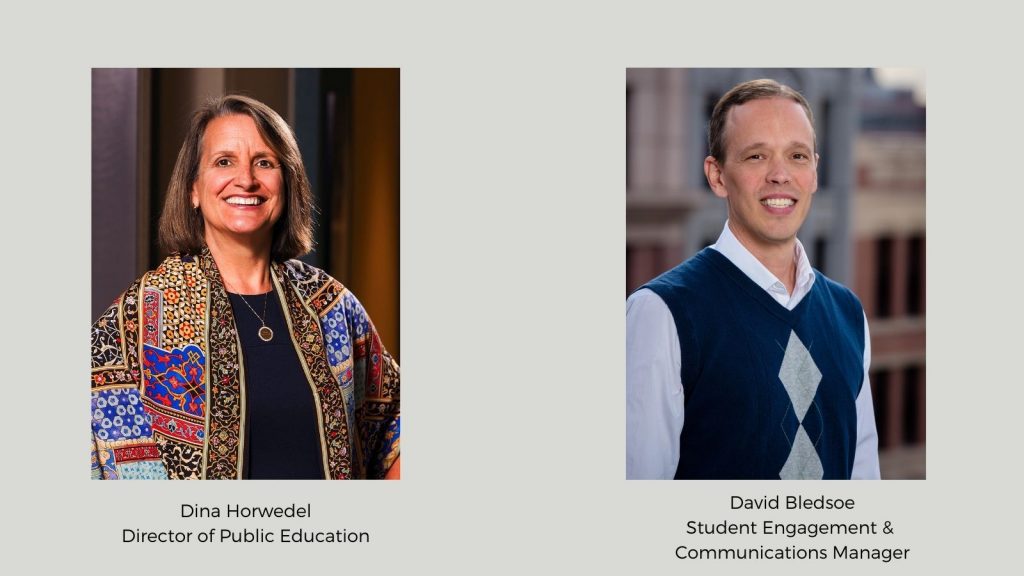 A lack of culturally appropriate resources for Native students launched a new line of publications by the American Indian College Fund. After the College Fund released Native Pathways: A College-Going Guidebook in spring 2019, the response was so positive and widespread that we created a second guide to help Native students successfully transition from college to career. The new “Career Pathways” guidebook was published in January, with the support of AT&T, and both guides can now be downloaded for free on the College Fund web site.
A lack of culturally appropriate resources for Native students launched a new line of publications by the American Indian College Fund. After the College Fund released Native Pathways: A College-Going Guidebook in spring 2019, the response was so positive and widespread that we created a second guide to help Native students successfully transition from college to career. The new “Career Pathways” guidebook was published in January, with the support of AT&T, and both guides can now be downloaded for free on the College Fund web site.
Although there are many career-planning resources to help students prepare for work, Career Pathways helps Native students plan for and accomplish their career goals while honoring their Indigenous cultures and addressing their specific challenges.
Many cultural differences come into play for Native students when job-seeking, attending career fairs, and networking, including how to display respect and be true to Indigenous values and identity. The guide presents traditional career stepping-stones like internships, graduate school, skilled trades, how to interview, and engaging with professional associations through an Indigenous perspective that connects with their experience. The articles are written by and for Native Americans with insight into Native culture, such as finding ways to incorporate Indigenous style into professional wardrobes and finding careers that reflect graduates’ cultural, tribal, and personal values.
Daniel Sestiaga, special projects & initiatives manager at Tohono O’odham Community College in Sells, Arizona, said he will use the guide in his work at his tribal college to help students plan their career paths. “It’s so clear-cut, a step-by-step guide. [Tribal colleges] don’t need to reinvent the wheel and can give it to the students as a guide,” he said.
Sestiaga added that it is important that publications like the guidebook include photographs of Native people who look and dress like the students he serves. This gives the students inspiration for what they can accomplish. He also noted that the articles are written with an Indigenous perspective. “There is definitely a need for something like this because we don’t see [publications] like this specific to our population.”
The section on internships is important for students when exploring career opportunities, Sestiaga noted, because students often choose a career path without knowledge of what work is like on a daily basis. An internship provides students with knowledge and valuable experience to help them discover whether their career plan is the right one, and if so, positions them to gain valuable experience moving forward.
Sedelta Oosahwee, a senior program/policy analyst/specialist at the National Education Association in Washington, D.C., said, “I am here because I was able to meet people who believed in me and had faith in me and put me forward for certain opportunities…I know I want to do that for people.
Oosahwee continued, “I would encourage everyone to find these resources. When you find one, grab one and hold onto it and share with others. Once you learn, I think we have an obligation to help others along the way and pull them up and take them with us.”
Nicholas Courtney, a policy analyst at the National Congress of American Indians, said he appreciated the College Fund coupling the college-going and career-going guides, as some Native families, especially those supporting first-generation students, may not have the experiential knowledge their children need. These guides connect the soft and hard skills to navigate through a two, four, or six-year college experience to a career successfully, while allowing students to define that success for themselves.
Courtney noted that the Career Pathways guidebook does a good job of articulating what many Native people have felt but could not name. For example, “When you go to an organization and everyone looks the same and dresses the exact same way—this does not look like a place I’d enjoy… [the guidebook] trains you to look for these things.” He added that these checklists help unexperienced students think through their career decisions, which can add up to major successes or downfalls.
The College Fund encourages high school and college educators, career counselors, Native student centers, departments of education, education organizations, and school boards to share the publication with Native American students. To date there have been nearly 7,000 copies of the publication downloaded and distributed. Learn more about the College Fund here.
Dina Horwedel is the director of public education at The American Indian College Fund, with more than 20 years of cross-cultural communications experience in the U.S. and abroad. She holds a B.S. cum laude from Bowling Green State University and a J.D. from Cleveland Marshall College of Law.
David Bledsoe, NMC, is the student engagement & communications manager at The American Indian College Fund. He sets communication strategy and coordinates scholarship outreach to Native students, institutions and stakeholders – managing a wide array of communication channels. He has spent more than 20 years leading communications, outreach, public relations and marketing efforts for nonprofit organizations – including several higher education institutions and national associations. Bledsoe’s professional development and volunteer leadership in organizations like the Native American Journalists Association, Public Relations Society of America and the American Society of Association Executives have made it possible for him to continually raise the level of nonprofit marketing.
